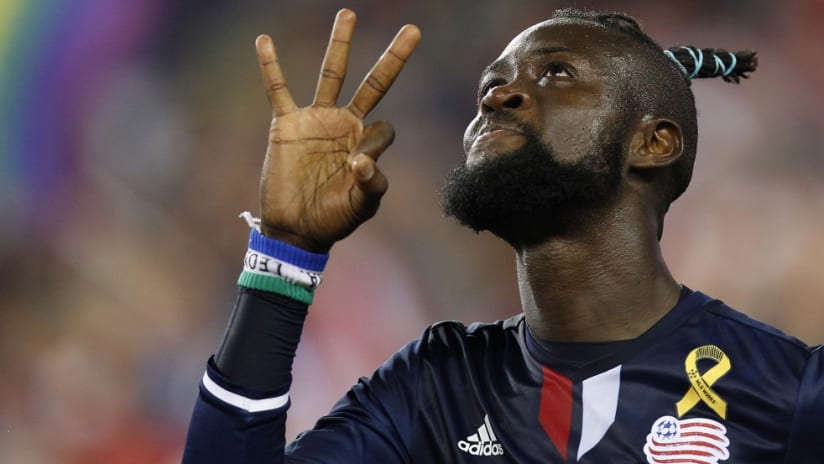Kei Kamara is no stranger to changing teams in MLS and on Sunday, he added another club to his résumé as the 2015 Best XI selection was traded to Vancouver Whitecaps FC for a couple draft picks.
The 33-year-old is coming off back-to-back 12-goal seasons and leaves the New England Revolution after being unable to lead them to a playoff appearance in either of his two seasons in Foxborough. He was traded from his previous club, Columbus Crew SC, after an on-field dispute with teammate Federico Higuain in May 2015.
What he brings to Carl Robinson's Whitecaps is obvious: a target man who can occupy opposing center backs and win almost any ball in the air. Last season Vancouver relied Fredy Montero to play as a lone striker in Robinson's 4-2-3-1 but the additions of Kamara and Venezuelan forward Anthony Blondell, Montero's status with the Whitecaps is uncertain as his loan expires at the end of the year.
2017 Kei Kamara highlights
Kamara's style of play would seem to fit with Vancouver's style as they were the most direct team in MLS in 2017, attempting the fewest passes per sequence of any team. Kamara is not, of course, known for his passing ability, so a team that likes to play more direct rather than a possession-based style better suits him.
His aerial ability is unmatched amongst players at his position, having finished in the top four in aerials won in each of the last three seasons. That kind of ability will be a departure from what Montero provided, if he were to not return, as the Colombian won just 18 of 75 aerial duels last season. For context, Kamara won 82 last season and was over 100 aerials won in the previous two seasons. That kind of leaping ability should come in handy for a team that attempted the third-most crosses from open play.
“He fits what we need at this moment,” Robinson told WhitecapsFC.com. “We’re a team that puts a lot of crosses into the box and he thrives off crosses.”
The question with Kamara has always been his ability to finish and over the past two seasons his production around where his expected goals would suggest it should be.
Year |
non-penalty xG |
non-penalty goals |
|---|---|---|
2016 |
12.35 |
11 |
2017 |
10.49 |
12 |
What the above table suggests is that they he slightly underperformed based on the quality of the chances he had, while in 2017 he slightly over-performed. More quality chances will likely lead to more goals for Kamara.
The ability to create those chances will be the question, as Vancouver created very few from open play last year. But with Robinson making it clear that he will look to Kamara to attack crosses, that number could increase and by extension increase the Whitecaps' forward productivity.













